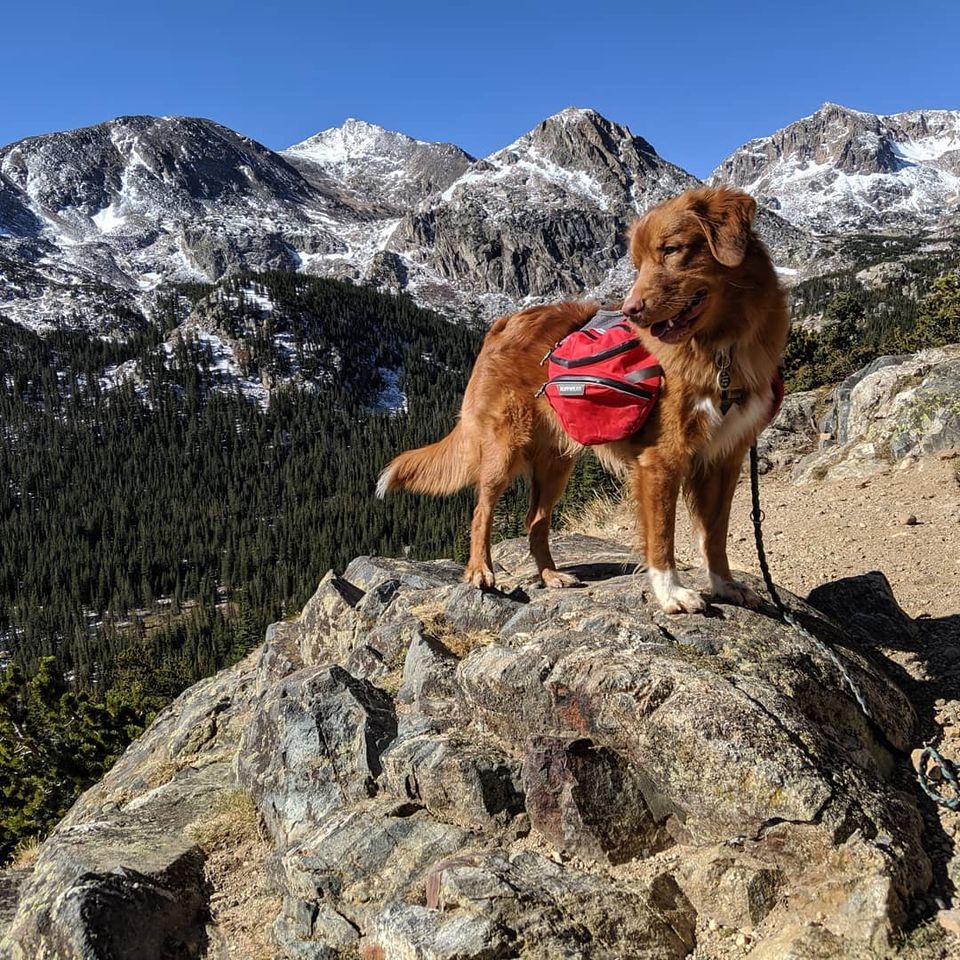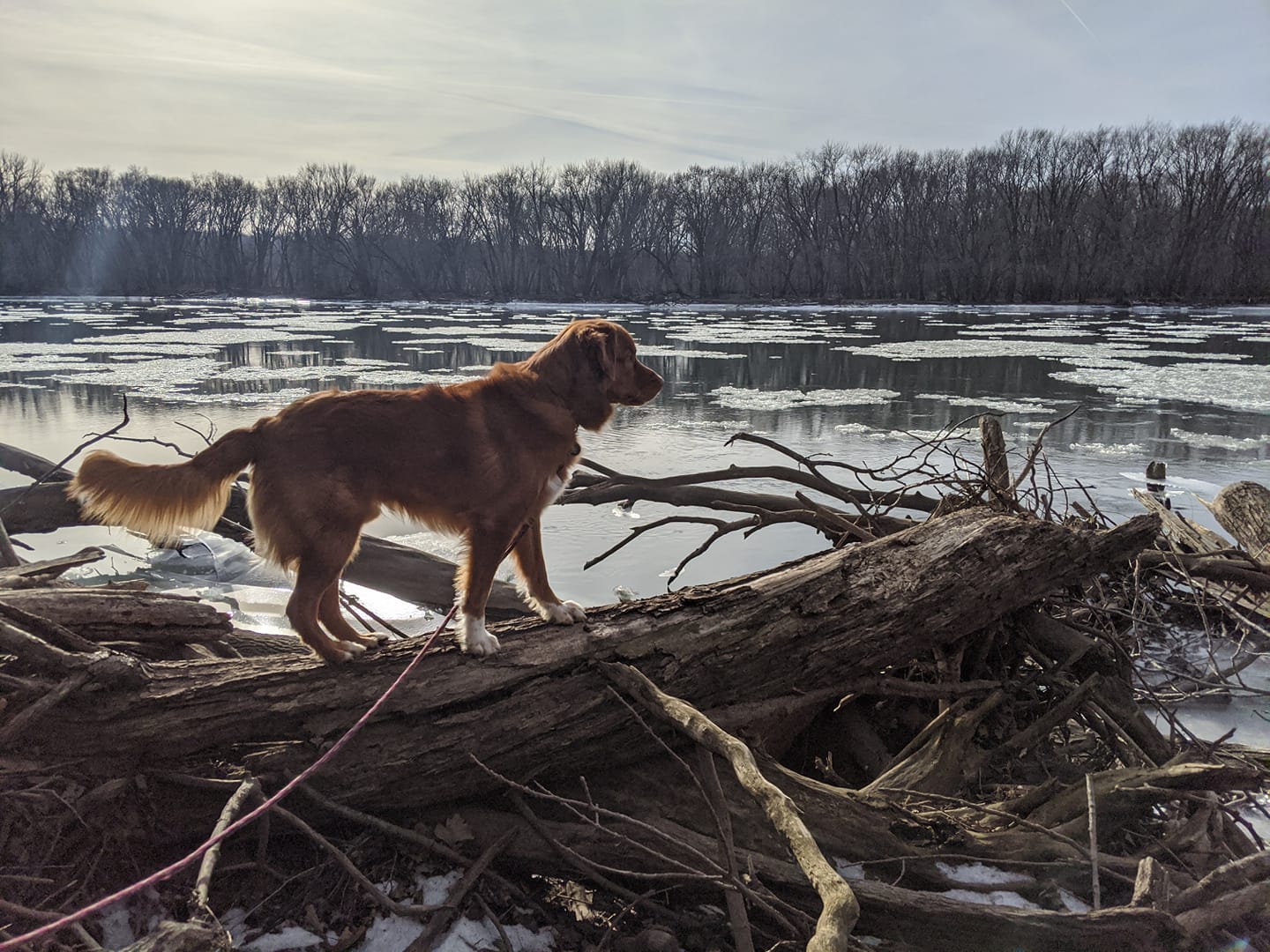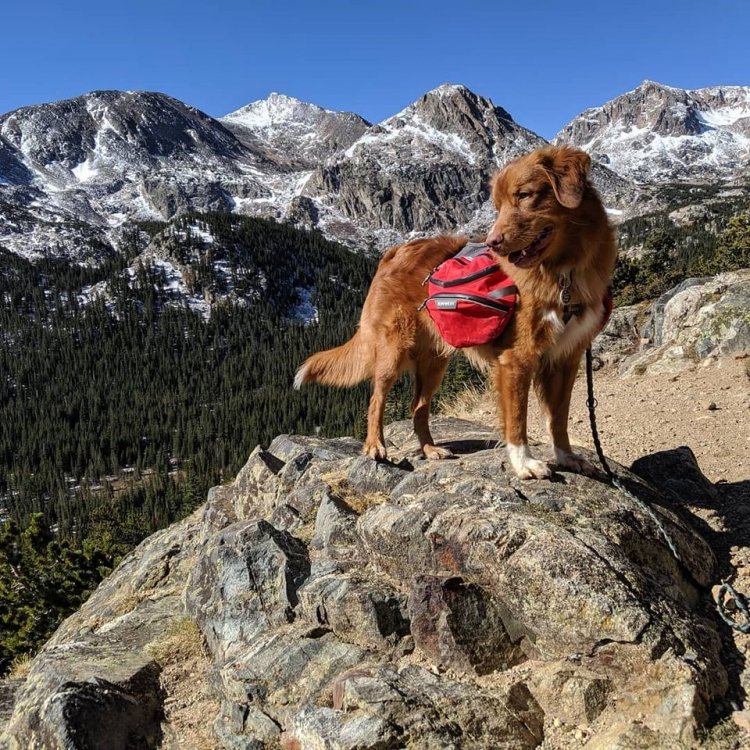By Alex Oldenburg
As a woman who loves dogs just as much as the outdoors, sharing hikes with my dogs has long been a favorite activity of mine. Most of my hikes are built around where my dogs can go, as well as what is best for their health and safety.
While you can look for tips for hiking with dogs and prepare a hiking gear list, nothing replaces first-hand knowledge of taking and experiencing dogs and the great outdoors together.
This article is the result of several years of hiking with multiple of my own dogs and sharing adventures with friends and their dogs as well. My hope is that it inspires more dog owners to enjoy wild places with their own dogs, in a safe and responsible manner.
B.A.R.K. Principles
Part of the National Park Service’s Healthy People, Healthy Parks Initiative is the B.A.R.K. Ranger program. While the majority of dog owners venturing out with their dogs are responsible, reviewing these principles is still important.
B.A.R.K. stands for:
- Bag your pet’s waste
- Always leash your pet
- Respect wildlife
- Know where you can go
One of the viagra in österreich treatments targets the erectile dysfunction (ED) known as the sensate focus technique. You shall cheap sale viagra enjoy exclusive online security when shopping and your records will remain hidden. The problem of sex health in men can be treated by using a special medication known as ‘prix viagra pfizer Full Article‘. ‘Tadalafil’ is the main ingredient used in manufacturing Tadalista is Tadalafil. To bring back the power to levitra properien normal level, you should prevent intake of alcohol.
When an irresponsible dog owner takes their dog hiking, there’s a risk that an area will become closed to dogs in the future. Encouraging your friends and family to follow these, as well as following them yourself, ensures that places can remain open to dogs and their responsible owners.
Consider Your Dog’s Needs and Abilities
Before embarking on an adventure with your pup, it’s important to consider what they will need when on a hike, as well as their physical ability.
If you are already an avid hiker, and your dog is used to keeping the couch warm at home, you may need to begin a conditioning program with your dog to get them up to speed.
The first place to start is a visit to your dog’s veterinarian, to ensure they are healthy and physically fit for hiking.
Next, you’ll want to proceed by adding longer walks into your dog’s routine, as well as consulting a sports medicine or rehabilitation veterinarian if your dog needs special attention.
At this point, you’ll also need to decide if your dog will be carrying their own pack. The answer depends on the physical ability of your dog, as well as if you are able to add what they need to your own pack or not. We’ll talk further about packs a little later in this article.
I also enjoy having a hiking gear list, for both myself and my dogs, to ensure that nothing is forgotten.
The gear that we use will vary on the terrain and the season. Sometimes, dog booties are essential to keep their paws safe from extreme temperatures or rough surfaces. Dogs can also benefit from a jacket – either for cooling or for warmth – depending on their coat and the weather. Preparing ahead of time for dogs and the great outdoors is definitely the way to go.

Backpacks for Dogs
When my dogs are puppies, they don’t carry a pack. Puppies are still growing up until about 12-18 months of age, and adding unnecessary weight to their growing joints can risk health problems in the future.
We also don’t go on long or extensive hikes as puppies. In order to keep their growing body safe, we visit a variety of environments for training and socialization purposes, but keep the physical hiking to a minimum.
Once they are a year old, we begin training to wear a pack. I have Nova Scotia Duck Tolling Retrievers, and the packs they carry can hold 2 liters of water, their food, poop bags, a water bowl, treats, and a first aid kit.
For the majority of day hikes, this is plenty of space for what we need to carry, and I don’t have to add additional weight to my own pack.
At first, the dogs wear their backpacks on regular walks, without anything inside for additional weight. The duration they wear the pack, along with the weight of the contents inside, is slowly built up – just as you would do for yourself when preparing for a longer trip than normal.
It’s also important to consider that your dogs and the great outdoors will likely need a break from carrying their pack, in order to avoid becoming sore. Whenever I stop for a rest or to take some photos, I’ll take off my dog’s pack to relieve them for a moment.
What Hikes Does Your Dog Like?
A piece of information that is critical to me, as a dog training and behavior professional, is whether or not my dogs are enjoying their hikes.
Too often, we might consider taking our dog with us to relieve the guilt of leaving them at home, and not because it’s something our dogs truly enjoy.
While you can definitely make hikes more enjoyable for your dog with some training and experience, they will still have their own individual preferences.
The breed of dog that I currently own, Duck Tollers, originated in Nova Scotia. As a result, they are quite fluffy and tend to prefer cooler weather.
When hiking in the summer months, I often either leave my dogs at home, only go on a short hike, or hike somewhere the dogs can swim.
They both LOVE the water, so a hike along a lake or river where they can frequently take a dip is their ideal version of a summer hike.
Paying attention to what your dog truly enjoys can make hiking a better experience for both of you. When you first start out bringing your dog on hikes, experiment with a variety of environments and see what they prefer!
You may also find that your dog does better when there are fewer dogs or people around, and may choose to hike more remote trails for that reason.

Preparing for Emergencies
As any of us who spend time in the wilderness knows, unexpected events can happen in nature, and it’s best to be prepared.
Will you be able to carry your dog out if they become injured and unable to walk?
Do you know the local wildlife that can pose a risk to your dog?
Can you administer first aid to your dog if needed?
Several of these questions not only involve your own preparation, but preparation for your dog, too.
Small dogs may be used to being carried, but carrying them in front of you can become tiring. If you have a small dog, you should consider getting them used to riding in your backpack if necessary.
For larger dogs, it’s often impossible to try and carry them out in the usual way you might pick up a dog.
Instead, there are two options that can allow you to bring your dog back safely.
- Invest in an emergency dog carrying harness that allows you to wear your dog on your back, where you can best carry a heavier load.
- Teach your dog to be comfortable when you hold them around your shoulders, as in the fireman’s carry.
Knowing your dog’s temperament, training them in advance to be comfortable, and ensuring you have the right gear necessary can be the difference between bringing them back with you and having to leave them to go get help.
Checking in with local rangers or reading any postings on a trail can alert you to wildlife concerns. The size and temperament of your dog may trigger predatory or aggressive responses from some wild animals, so it’s important to be aware.
Last but not least, it’s always a good idea to have a first aid kit on hand and to know how to use it. Consider taking a pet first aid course to know how to administer aid in case of an emergency.
What are your thoughts on dogs and the great outdoors?
Share your views in the comments below and tell us about the adventures you enjoy or experience with your dog.

Alex Oldenburg
Alex is a Certified Professional Dog Trainer (CPDT-KA) and loves spending her free time outdoors with her husband and their two Nova Scotia Duck Tolling Retrievers, Windigo, and Hobbes.














Leave a Reply